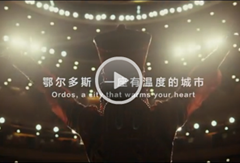Ordos Long Song - "Guru Songs"
Updated: 2018-05-08  Print
Print 



"Guru" in Mongolian means "national" or "governmental". The music originated in the court, spread among the people after the decline of the royal power, and became an ancient folk music genre.
These long songs are often sung unaccompanied by anything, themes of which are primarily blessing, praise and preach.
They have a beautiful and unique melody, a slow and free rhythm, and elegant styles, while indulging in serious topics and orthodox content, and sung with distinctive methods of singing.
These songs express the perception Mongols have towards life and their aspirations in the long development of their lives. These Mongolian court songs have been performed since the Yuan Dynasty (1206-1368), primarily during feasts, which are why they are known as a diamond of Mongolian classic music.
They are popular in a few regions along the river of Hanggin Banner.
Their main features are that the music is generally performed in a group of three songs at only grand ceremonies and not in any casual occasion. A chief singer - an old man or elder - sings first to begin the show, followed by three main songs in a chorus form.
The melody is slow but not sloppy and the rhythm is sometimes unclear with great turns and a natural chorus.
Unlike most Mongolian long and short music, the "Guru songs" are multi-voice, ethereal, desolate and solemn. Several masterpieces are "Holy Palace", "Heaven Horse" and "Tall Crops".
They are valuable not only for musicology, literature and linguistics, but are also an important reference for anthropology, ethnology and folklore.
For hundreds of years, the songs have been orally passed down among families and through mentoring relationships. Different regions and singers have nurtured a number of various styles.





 Ordos Impression
Ordos Impression Ordos WeChat
Ordos WeChat Ordos Reported
Ordos Reported


